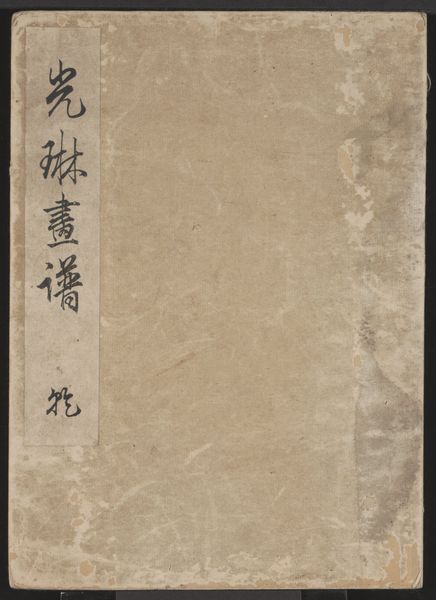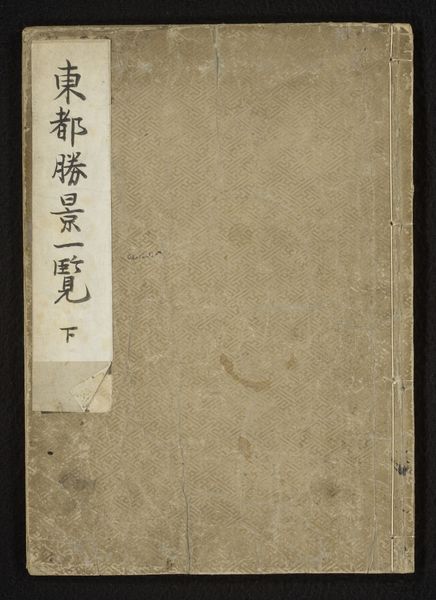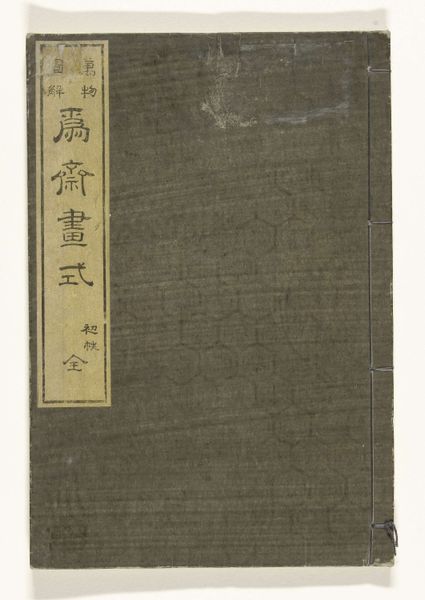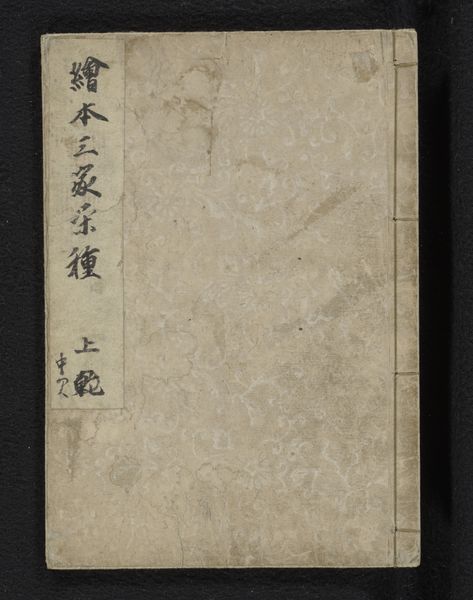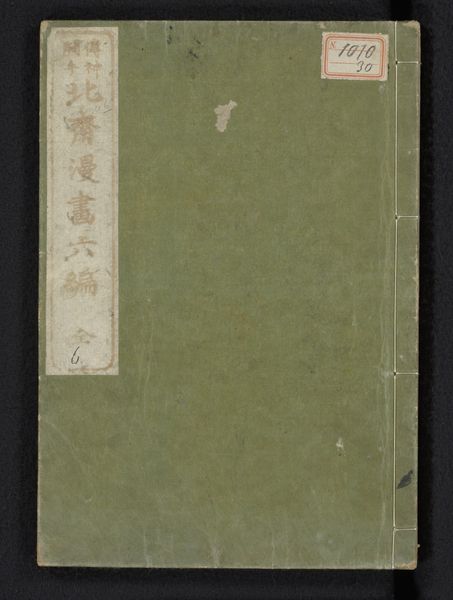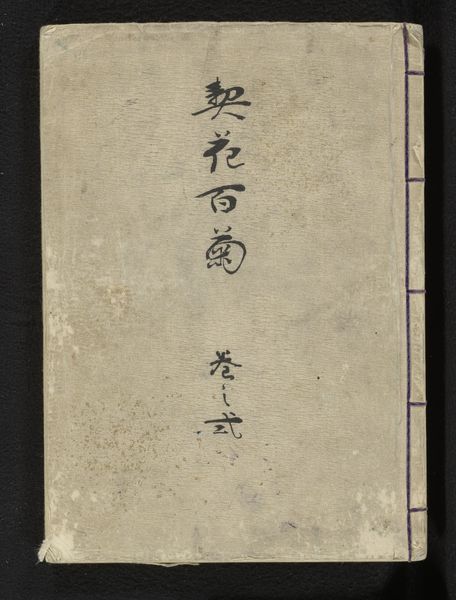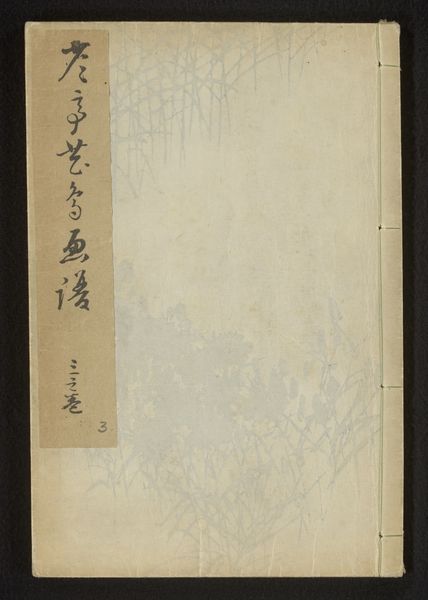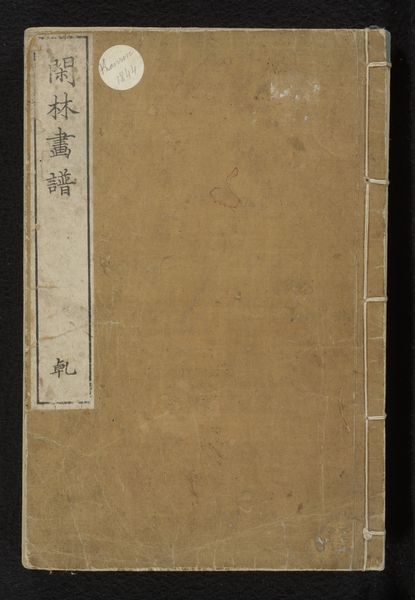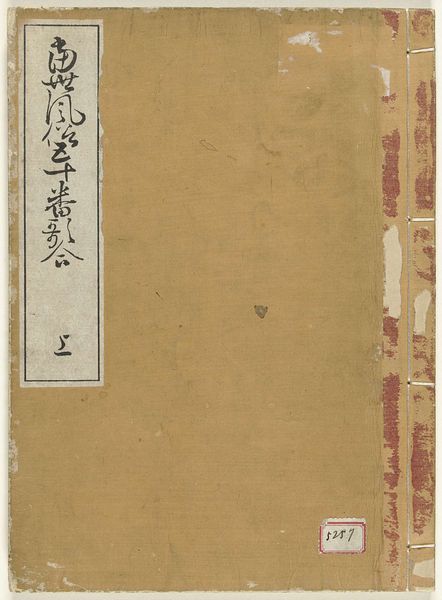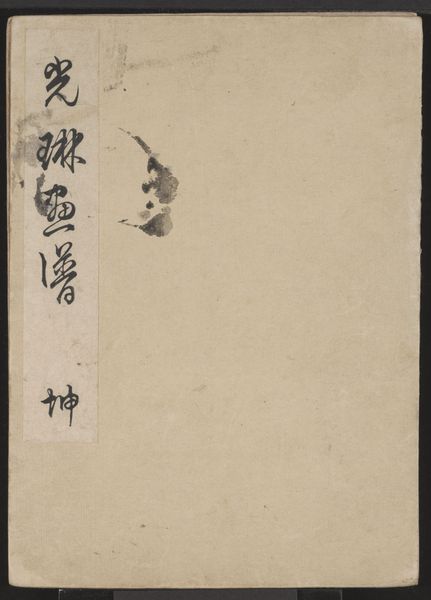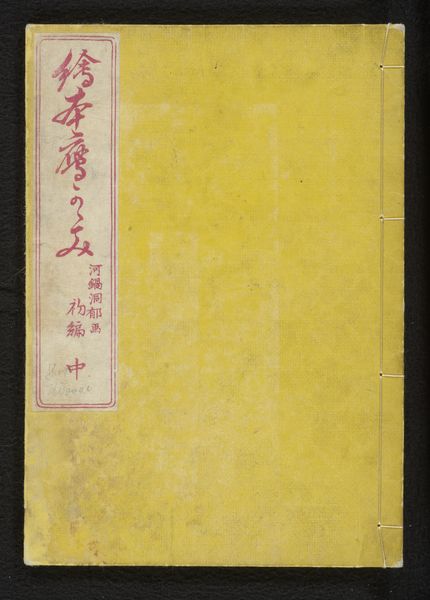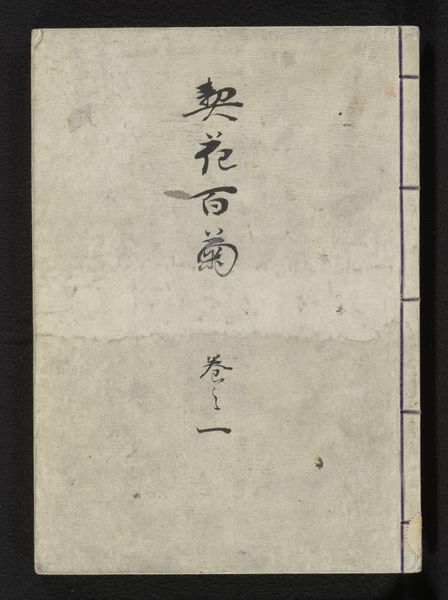
paper
#
asian-art
#
paper
Dimensions: height 303 mm, width 210 mm
Copyright: Rijks Museum: Open Domain
Editor: We’re looking at "A Complete Collection of Sketches - Part One" from 1888, by Kondō Ariyoshi. It's an intriguing image of what seems to be an old, bound set of paper sketches. The visual weight feels predominantly on the left due to the vertical inscription. How do you interpret this work, focusing on its formal qualities? Curator: Note the careful balance between the void of the paper and the structured density of the inscription panel. Observe the textured surface; the age and material qualities speak directly to its function. Semiotically, the inscription functions as a powerful signifier – but its legibility as pure form introduces a tension. What does that suggest to you about the artist's intention? Editor: Perhaps to direct the viewer’s attention, but not fully reveal its content. The inscription uses vertical lines with sharp angles contrasting the empty space. I also noticed the symmetry that creates visual rhythm on its bordering, it is there a connection to the title that makes the viewer know its intention without fully expressing it? Curator: Precisely. Consider also the compositional interplay: the muted palette versus the graphic sharpness of the inscribed text. The book’s form suggests process and collection, inviting tactile exploration. This work prioritizes the essence of art creation – it's materiality – how do you respond? Editor: The tension lies in the flat cover and the suggestion of dimensionality. It leaves me wondering what the inside looks like, even if we don’t get to see those. Curator: Exactly. Through formal and semiotic language, it speaks of layers – of meaning, of the creative process. A deep dive into pure form. Editor: A fascinating interplay of elements – restraint and expression so evident on a visual and a textual level. I now realize the power of understanding art through its very structure.
Comments
No comments
Be the first to comment and join the conversation on the ultimate creative platform.
